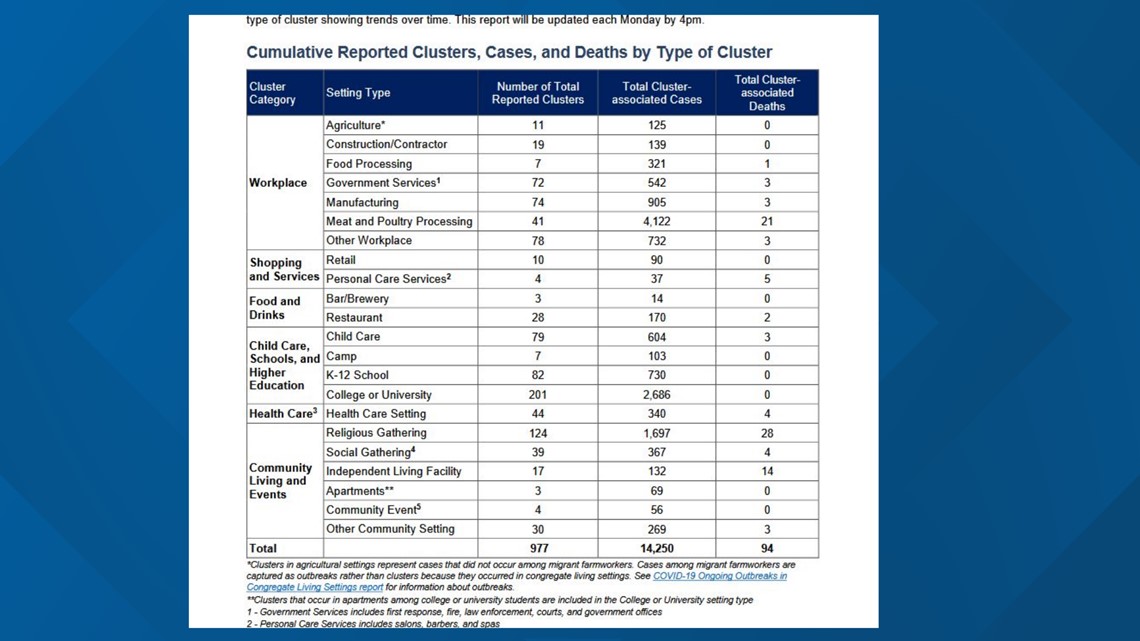NORTH CAROLINA, USA — In two days, we have to get used to the new Executive Order that puts curfews on people and businesses.
Governor Roy Cooper said in his COVID-19 briefing on Tuesday that it's to help stop the spread of COVID-19.
But some are questioning the curfew from 10 p.m. to 5 a.m., because many people are asleep during that time anyway.
How could this help cut down on cases?
"I'm just concerned I don't understand what having a stay-at-home rule between 10 p.m. and 5 a.m. is going to do to curb the spread," Jennifer Gattis of Burlington said.
She tested positive for COVID-19 on Sunday even though she said she's done everything by the book.
"I sanitize my hands when I leave the grocery store, I wear my mask faithfully every time I leave the house."
So the overnight curfew Governor Roy Cooper imposed starting Friday is puzzling her.
"I know several people who have come down with COVID-19. We got it during the daytime, we're not out at night. I’m not a medical professional but I understand enough about viruses that they don’t wear watches, they have no clue what time it is," Gattis explained.
No, the coronavirus doesn't have a watch.
The North Carolina Department of Health and Human Services summarized that the curfew is less about the time itself, and more about what people tend to do in that time period.
The NCDHHS sent WFMY News 2 a statement that reads in part:
"Late-night activities often include gathering in small, indoor places with many people, where alcohol consumption may make people less cautious."
On top of the 10 p.m. curfew, alcohol sales will be banned after 9 p.m.
That means bar owners like Ian Purdy are doubly impacted. Purdy owns Reboot Arcade Bar in Winston-Salem.
"80% of our income is between the hours of 9 p.m. and 11 p.m. so {Governor Cooper} is really kind of cutting us off at the knees here," Purdy stated.
Purdy said he follows all the rules, wears his mask and enforces that in his bar. He believes the curfew will only drive people to hold gatherings at home in an unsafe manner.
"For the most part we can see the hypocrisy in that, especially now that the data is out you can see bars and restaurants are really not responsible for clusters in this state."
Purdy is referencing this cluster chart from the NCDHHS.


According to the chart, the total cluster-associated cases at bars since May is 14.
Compared that number to religious gatherings for example, standing at 1,697 as of Wednesday afternoon.
"It's very frustrating," Purdy stated. "We were closed longer than any other industry. Obviously, we're not essential people don't die when they can't get to a bar but they also don't die when they can't go to Lowe's Home Improvement."
The NCDHHS sent a statement in response to WFMY News 2's questions concerning the chart:
In the past week, North Carolina’s case count has broken single-day records on three separate days, including crossing more than 6,000 cases per day on several days. Just a month ago, cases were under 3,000 per day. In recent days, the percent of tests returning positive has increased to more than 10%. The new modified Stay At Home order aims to limit gatherings and get people home where they are safer, especially during the holidays. Late-night activities often include gathering in small, indoor places with many people, where alcohol consumption may make people less cautious.
The “Food and Drinks” section of the COVID-19 Clusters in NC report does include clusters identified in restaurants and bars/breweries, as well as social gatherings. However, while the report includes clusters identified by local health departments, it underrepresents the full scope of clusters and associated cases occurring across the state. Many COVID-19 cases cannot be linked to a specific setting or specific cluster, especially during periods of widespread transmission like we are currently experiencing. Scientific studies have found that eating and drinking on-site at locations that offer such options may be important risk factors associated with COVID-19. These settings pose a higher risk for transmission since people cannot consistently wear masks while eating and drinking.

